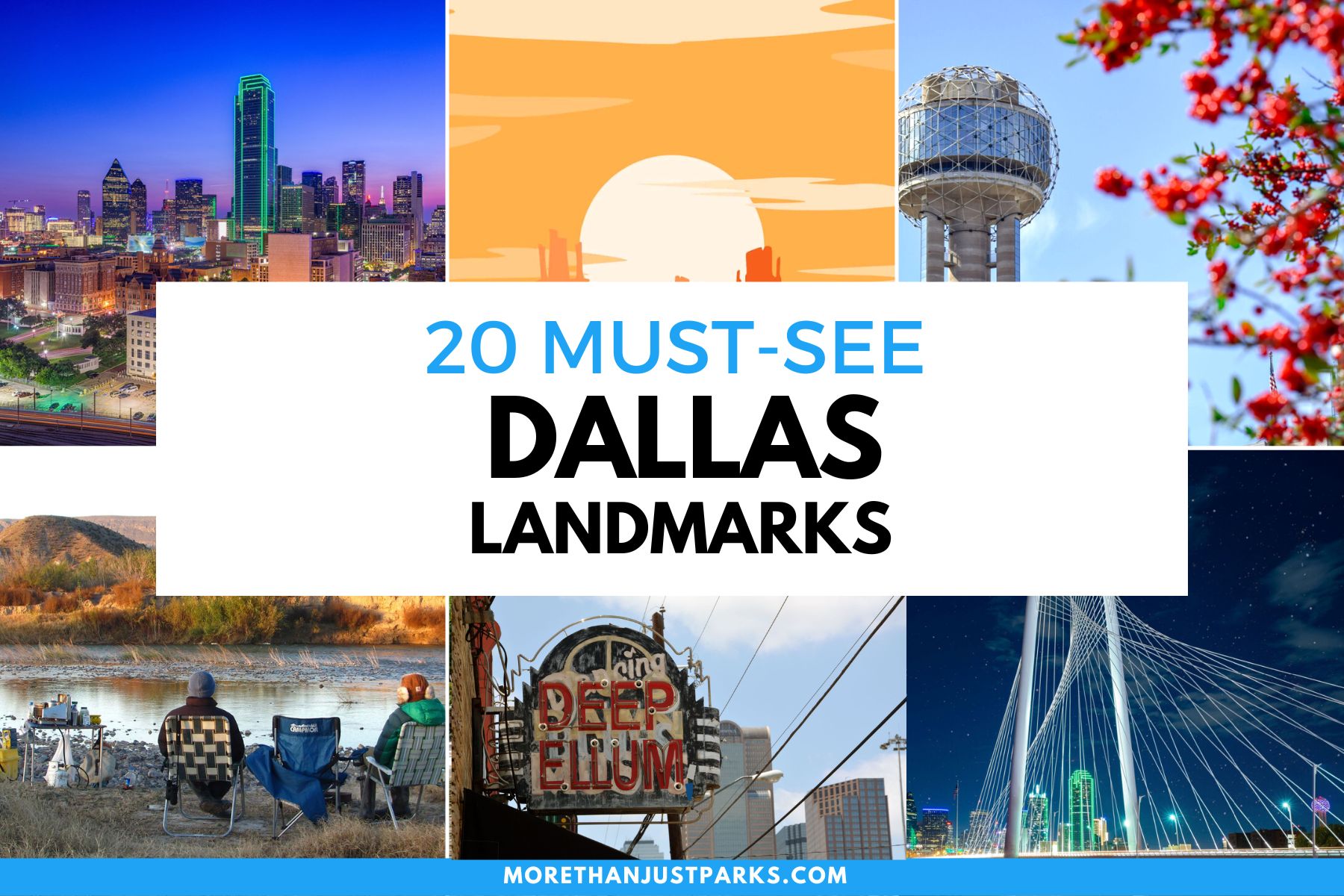
Article Summary: Dallas Landmarks
Dallas Landmarks. More Than Just Parks has 15 incredible must-see sites for you to visit.
There’s so much more to this exciting place than the Dallas Cowboys. In this article, we’ll familiarize you with the incredible landmarks located in Dallas.
We’ve got incredible places, iconic memorials, fascinating museums, epic monuments and so much more.
We’re going to give you our list of the Top 15 Landmarks In Dallas.
So, What Is A Landmark?
Well, it’s a place of “a special character or special historical or aesthetic interest or value as part of the development, heritage, or cultural characteristics of a city, state, or nation.”
Why visit these places? Because landmarks connect us to the past. Through visiting these wonderful places where history occurred we find our roots. It allows us to feel like we are a part of something much bigger than ourselves.
And, speaking of history, did I mention that I taught the subject? I spent a lifetime teaching about the history behind many of these amazing sites. Then I got to see them firsthand. And now I’m sharing the fascinating stories of these places with you. It doesn’t get any better than that!
So, without further ado, let’s dive in.
Table Of Contents
Dallas Landmarks
Some Fascinating Facts About Dallas
Here are some fascinating facts about the city of Atlanta:
- Dallas is the third-largest city in the state of Texas and the ninth-largest in the United States, with a population of over 1.3 million people.
- The city was founded in 1841 and named after Vice President George M. Dallas.
- Dallas is home to the Dallas/Fort Worth International Airport, which is one of the busiest airports in the world and serves as a major hub for American Airlines.
- The city is known for its vibrant arts scene, including the Dallas Museum of Art, the Nasher Sculpture Center, and the Dallas Symphony Orchestra.
- Dallas is also home to several professional sports teams, including the Dallas Cowboys (football), the Dallas Mavericks (basketball), and the Dallas Stars (hockey).
- The city is famous for its Tex-Mex cuisine, including dishes such as enchiladas, tacos, and fajitas.
- Dallas has a thriving business community and is home to several Fortune 500 companies, including AT&T, ExxonMobil, and Texas Instruments.
- The city has a rich history in the oil industry, and the Dallas Petroleum Club is one of the most prestigious business clubs in the world.
- Dallas has a diverse population, with a significant African American and Hispanic community.
- The city is home to several universities, including Southern Methodist University and the University of Texas at Dallas.
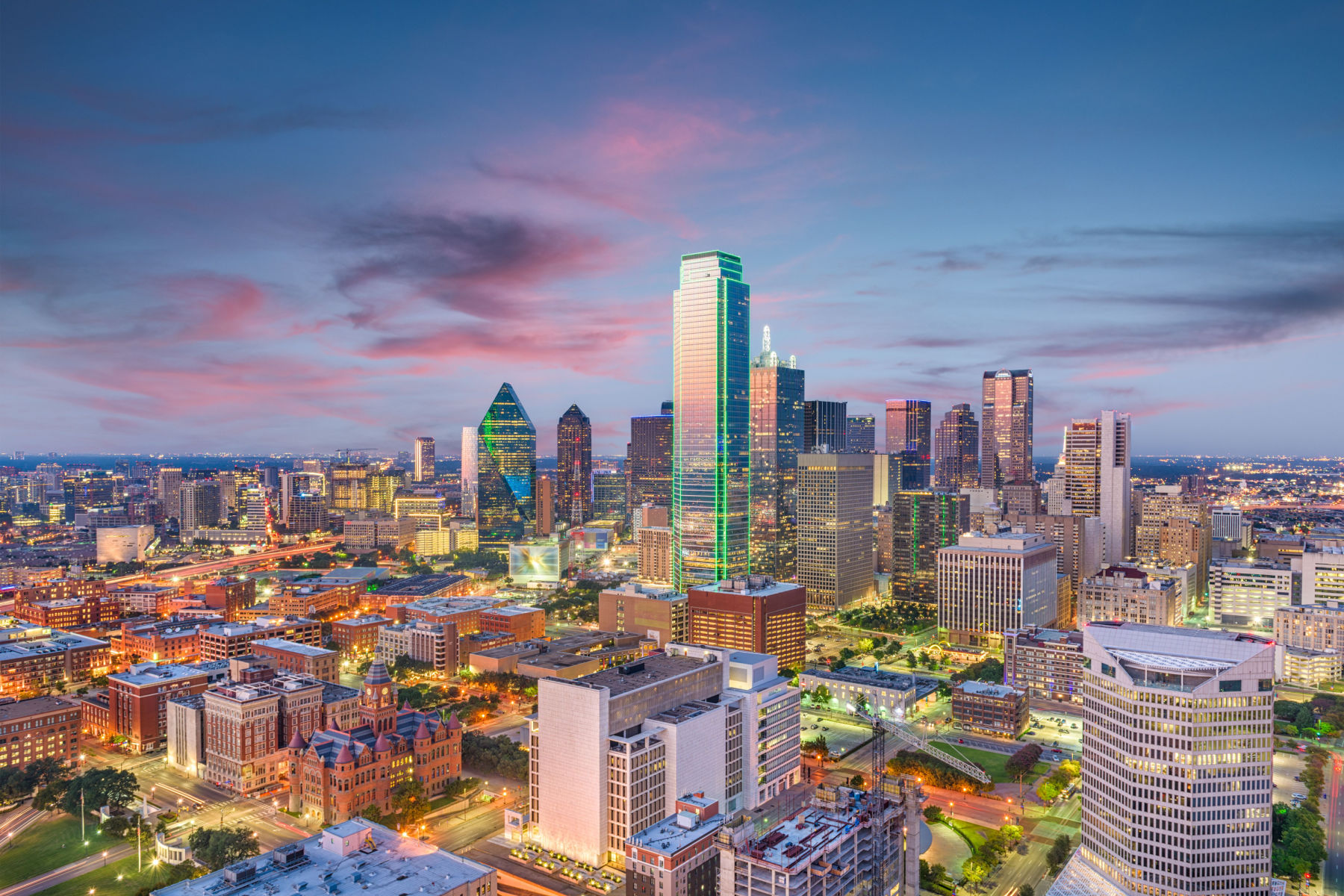
We’re Excited To Share Our List Of The Top 20 Dallas Landmarks With YOU
Dallas is home to more than a dozen neighborhoods and districts that each have their own distinct vibe and attractions. From spectacular museums and performing arts venues in the Arts District, to the buzzing nightlife of live music at cool bars in Deep Ellum, Dallas has a place for everyone.
It’s also home to some amazing landmarks. More Than Just Parks is excited to share our list of the Top 15 Dallas Landmarks with you. And we’re kicking off our list at #15 with Fair Park.

Top 15 Landmarks In Dallas
15. Fair Park
Fair Park is a 277-acre recreational and cultural complex located in Dallas, Texas. It was established in 1886 as the Dallas State Fairgrounds, a location for the annual State Fair of Texas, which began in 1887.
Over the years, Fair Park grew to include many different types of attractions, such as amusement rides, concerts, and sports events.
In 1904, a grand exposition was held at Fair Park, which featured the latest technological innovations and products from around the world. The success of this event helped establish Dallas as a major cultural and commercial center in the Southwest.
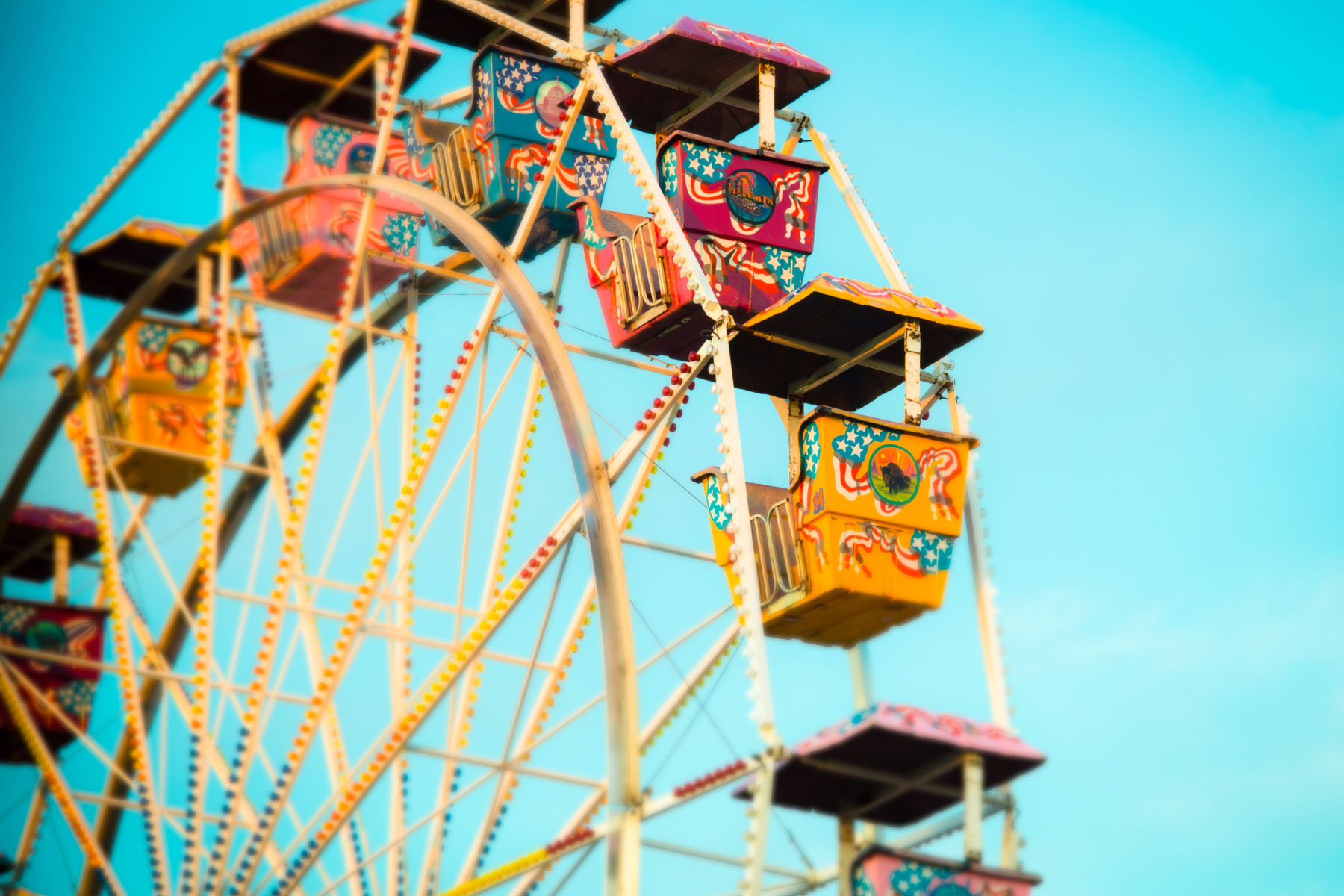
Check Out The Amazing Hall Of State
In 1936, Fair Park hosted the Texas Centennial Exposition, a world’s fair celebrating the 100th anniversary of Texas’ independence. The fair featured numerous exhibits and attractions, including the Hall of State, which remains a prominent landmark of Fair Park to this day.
Many of the buildings and structures constructed for the Centennial Exposition are still in use today, including the Cotton Bowl Stadium and the Texas Discovery Gardens.
During World War II, Fair Park served as a training and induction center for the U.S. military. After the war, it resumed its role as a major cultural and recreational hub for the Dallas community.
However, by the 1970s, the park had fallen into disrepair and faced financial struggles. In 1986, the City of Dallas established the Fair Park Task Force to revitalize the park and preserve its historical significance.
Today, Fair Park is home to several museums, including the African American Museum, the Museum of Nature and Science, and the Children’s Aquarium at Fair Park.
The park also hosts numerous events throughout the year, including the State Fair of Texas, the Texas Scottish Festival and Highland Games, and the North Texas Irish Festival.
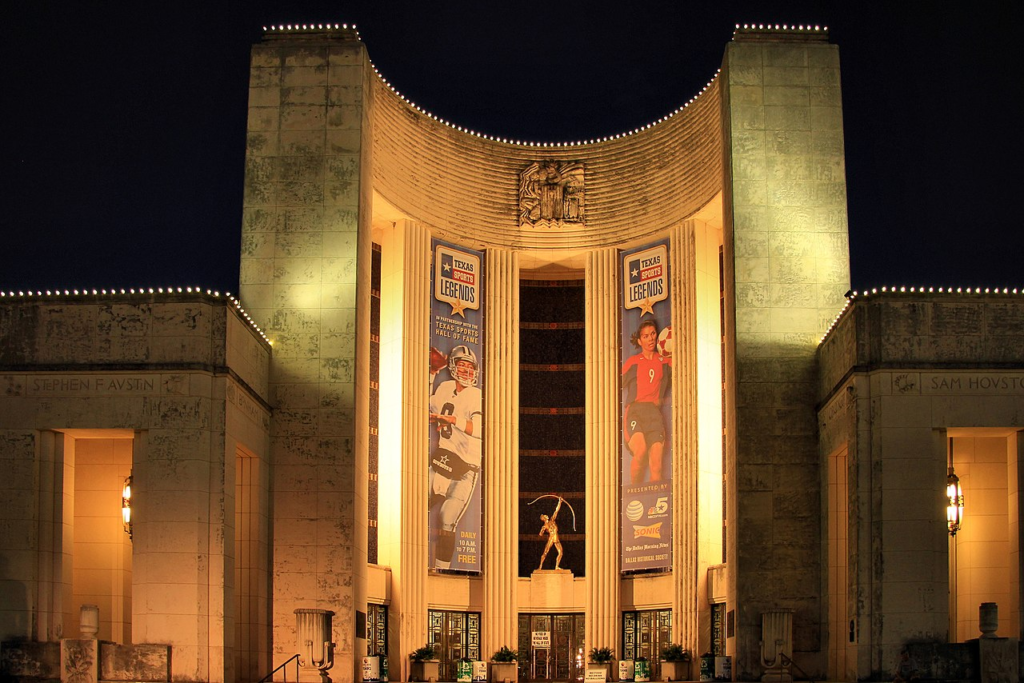
14. Deep Ellum
Our next Dallas landmark was one of the city’s first commercial districts to welcome African Americans and European immigrants, and it soon became a center for industry. At #14 on our list of the Best Dallas Landmarks is Deep Ellum.
It’s a vibrant neighborhood located in Dallas, Texas. The district is known for its rich history, cultural diversity, and thriving arts and entertainment scene.
The neighborhood was founded in the late 19th century as a center for industry and commerce, and it quickly became a hub for African American and immigrant communities.
In the early 20th century, Deep Ellum emerged as a center for jazz and blues music, and it was home to some of the most famous performers of the era, including Blind Lemon Jefferson and Robert Johnson.

It’s Been A Music Hotspot
It was in the 1920s that Deep Ellum started to become a destination for music, specifically jazz and the blues.
Within the course of a few decades, the neighborhood hosted artists like Huddie “Leadbelly” Ledbetter, Bessie Smith, Texas Bill Day, Blind Lemon Jefferson, Robert Johnson and many more.
In 1933, a song titled “Deep Elm Blues” was recorded by the Lone Star Cowboys and, later, the Shelton Brothers; years later, it would even be covered by The Grateful Dead. Altogether, from 1920 to 1950, the number of nightclubs, cafes and domino parlors in Deep Ellum jumped from 12 to 20.
However, just as the Deep Ellum music scene began to reach its peak, changes in American life temporarily dampened it. As people began moving from the city to the suburbs and the growing popularity of the automobile brought encroaching highways into the neighborhood, businesses were forced to close.
It wasn’t until 1980 that Deep Ellum saw a massive rebirth in thanks to the Dallas punk scene, which helped launched the careers of musicians like Tripping Daisy and the New Bohemians.
Ten years later, the music venue Trees would open its doors and begin to host nationally acclaimed acts like Nirvana, the Roots, Radiohead and more. (Source: Parks For Downtown Dallas)

Deep Ellum Has Continued To Evolve & Change
In the decades that followed, Deep Ellum continued to evolve and change, with waves of new immigrants and artists contributing to the neighborhood’s rich cultural heritage.
Today, Deep Ellum is a thriving arts and entertainment district, with a diverse mix of galleries, music venues, restaurants, and shops.
Visitors to Deep Ellum can explore the neighborhood’s many cultural offerings, including art exhibits, live music performances, and food festivals. The district also offers a variety of historical and architectural landmarks, including the historic Kirby Building, the Deep Ellum Station, and the old Union Bankers Trust Building.
In addition to its cultural and historical significance, Deep Ellum is an important center of community and activism in Dallas. The neighborhood has a strong sense of identity and pride, and it is a hub for grassroots organizations, social justice movements, and community-based initiatives.
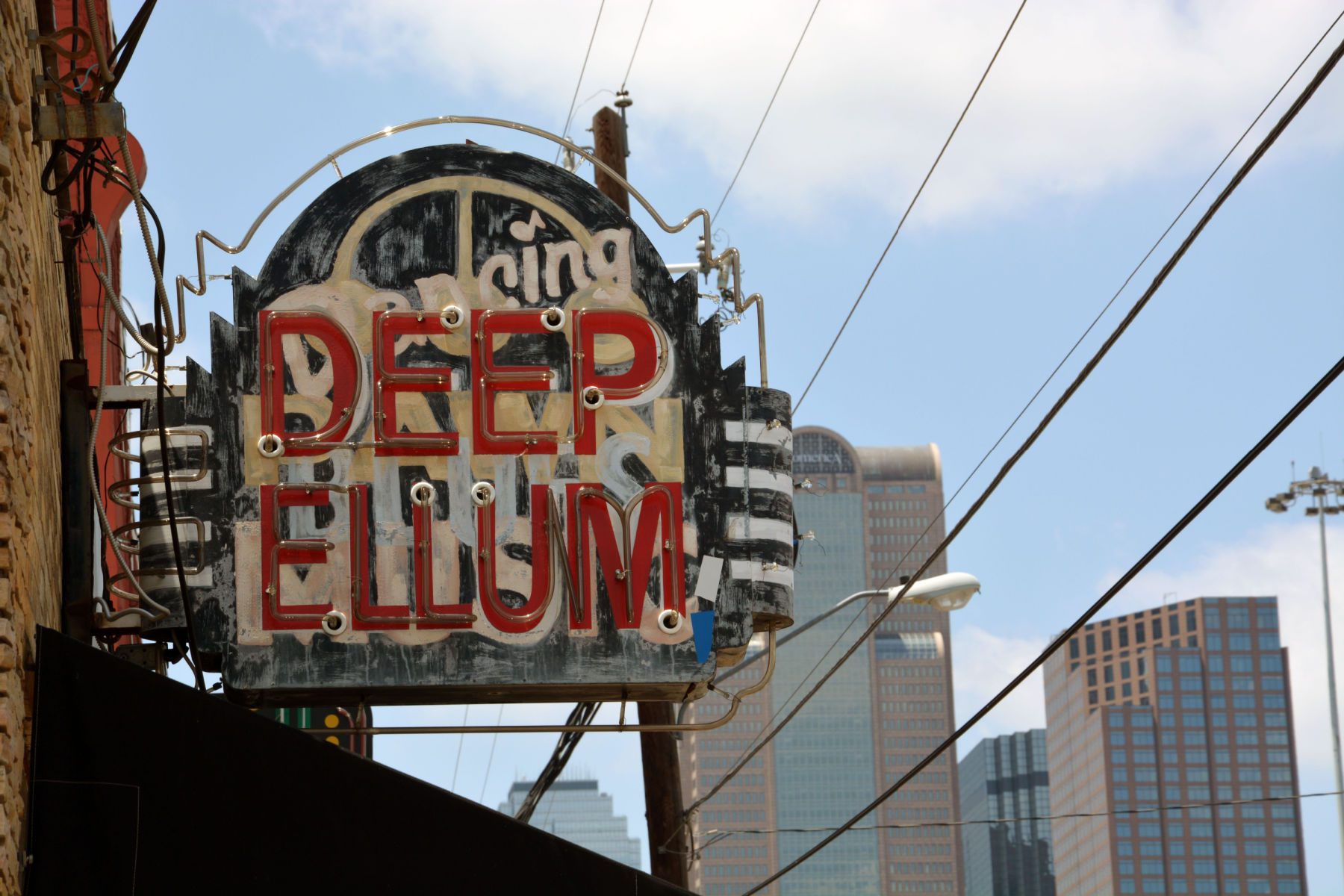
13. Margaret Hunt Hill Bridge
Our next Dallas landmark is a stunning bridge with a 400 foot center arch connects Woodall Rodgers Freeway seamlessly to Singleton Boulevard in West Dallas and the new restaurant areas such as Trinity Groves and Sylvan 30. At #13 on our list of the Best Dallas Landmarks is the Margaret Hunt Hill Bridge.
The Margaret Hunt Hill Bridge is a cable-stayed bridge that spans the Trinity River in Dallas, Texas. It was named after Margaret Hunt Hill, the wife of oil tycoon H.L. Hunt, and is one of three bridges planned for the Trinity River Corridor Project.
The project to build the Margaret Hunt Hill Bridge began in 2005, with an international design competition that attracted entries from around the world.
The winning design was submitted by Spanish architect Santiago Calatrava, who also designed the Sundial Bridge in Redding, California, and the Puente de la Mujer in Buenos Aires, Argentina.

View of Margaret Hunt Hill Bridge from Reunion Tower | Courtesy of Wikimedia Commons
Built At A Cost Of $182 Million Dollars
Construction on the bridge began in 2007 and was completed in 2012 at a cost of approximately $182 million. The bridge features a 400-foot-tall central tower and 58 cables that support the roadway. The bridge is 1,870 feet long and 120 feet wide, with six lanes of traffic and pedestrian and bicycle lanes on either side.
The Margaret Hunt Hill Bridge was officially opened to the public on March 2, 2012, with a celebratory ribbon-cutting ceremony attended by local and state officials. Since then, the bridge has become an iconic landmark of the Dallas skyline and a popular destination for tourists and locals alike.
In addition to providing a crossing for vehicles, pedestrians, and bicycles, the bridge has also served as a catalyst for redevelopment in the area.
The Trinity Groves development, which includes restaurants, shops, and residential buildings, was built on land adjacent to the bridge and has become a major destination for dining and entertainment in Dallas.
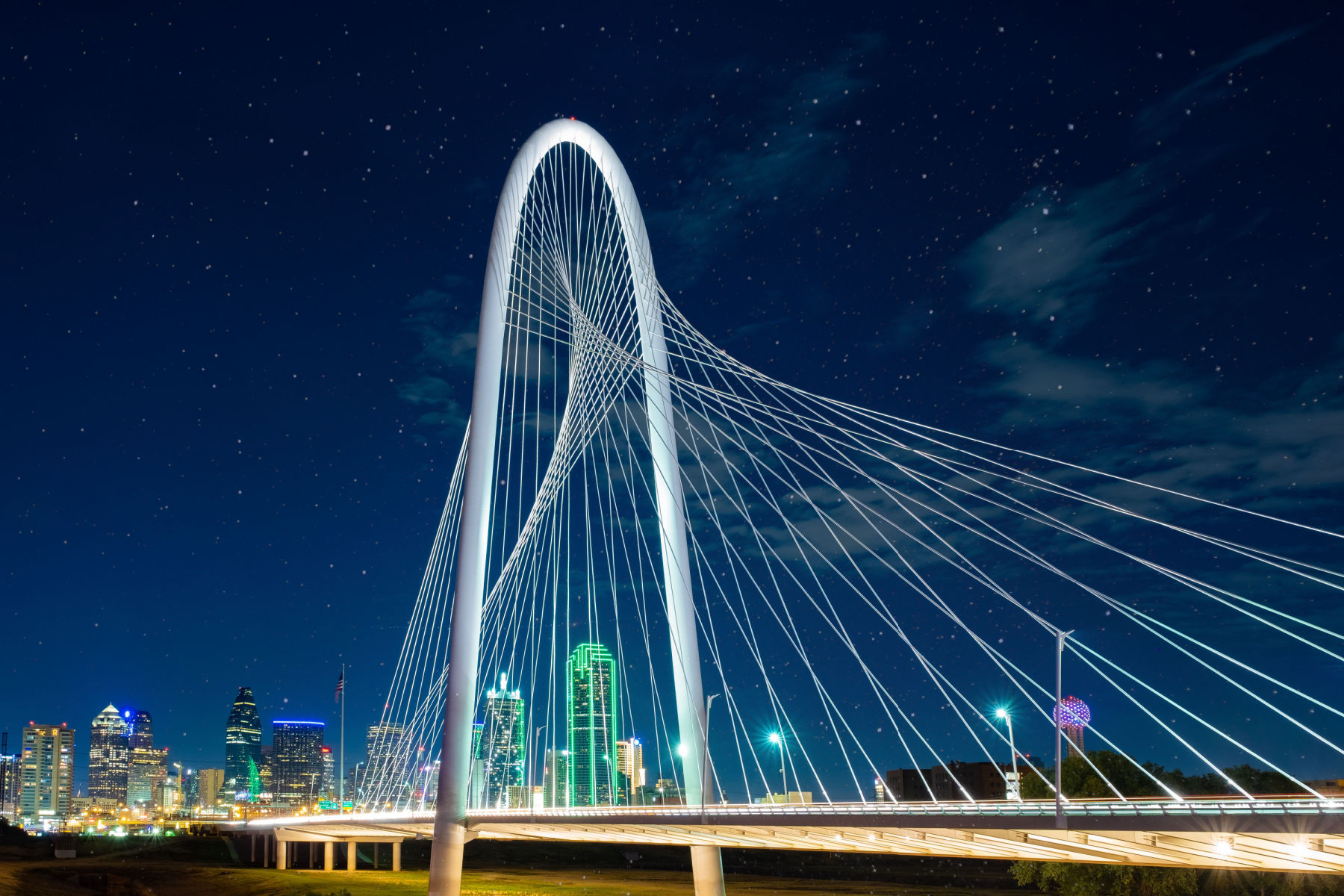
12. Cedar Ridge Preserve
If you enjoy nature then you’ll love our next Dallas Landmark. It’s a natural habitat of 600 acres featuring about 9 miles of trails, native trees, grasses and wildflowers, butterfly gardens, limited picnic areas and wild mammals, birds, insects, and reptiles. Welcome to Cedar Ridge Preserve.
Cedar Ridge Preserve is a 600-acre nature preserve located in southwest Dallas, Texas. It was established in 2003 by Audubon Dallas, a local chapter of the National Audubon Society, and is managed by the City of Dallas Parks and Recreation Department.
The preserve features over 9 miles of hiking trails that wind through wooded hills, prairies, and wetlands. The trails are well-marked and vary in difficulty, making them suitable for hikers of all skill levels.
Along the trails, visitors can enjoy scenic overlooks, wildflowers, and a variety of wildlife, including deer, rabbits, and numerous bird species.

It’s Home To The Ruthie Pack Educational Center
Cedar Ridge Preserve is also home to the Ruthie Pack Educational Center, which features exhibits on the local flora and fauna, as well as educational programs and events for visitors of all ages. The center is named after Ruthie Pack, a longtime member of Audubon Dallas who played a key role in the establishment of the preserve.
One of the unique features of Cedar Ridge Preserve is its proximity to the urban environment of Dallas. The preserve is located just 20 minutes from downtown Dallas, but its rugged terrain and natural beauty make visitors feel as though they are miles away from the city.
The preserve is open daily from dawn to dusk, and admission is free. Donations are accepted to support the ongoing maintenance and preservation of the preserve.
Cedar Ridge Preserve is a popular destination for hiking, nature photography, birdwatching, and other outdoor activities, and it offers a peaceful retreat from the hustle and bustle of city life.
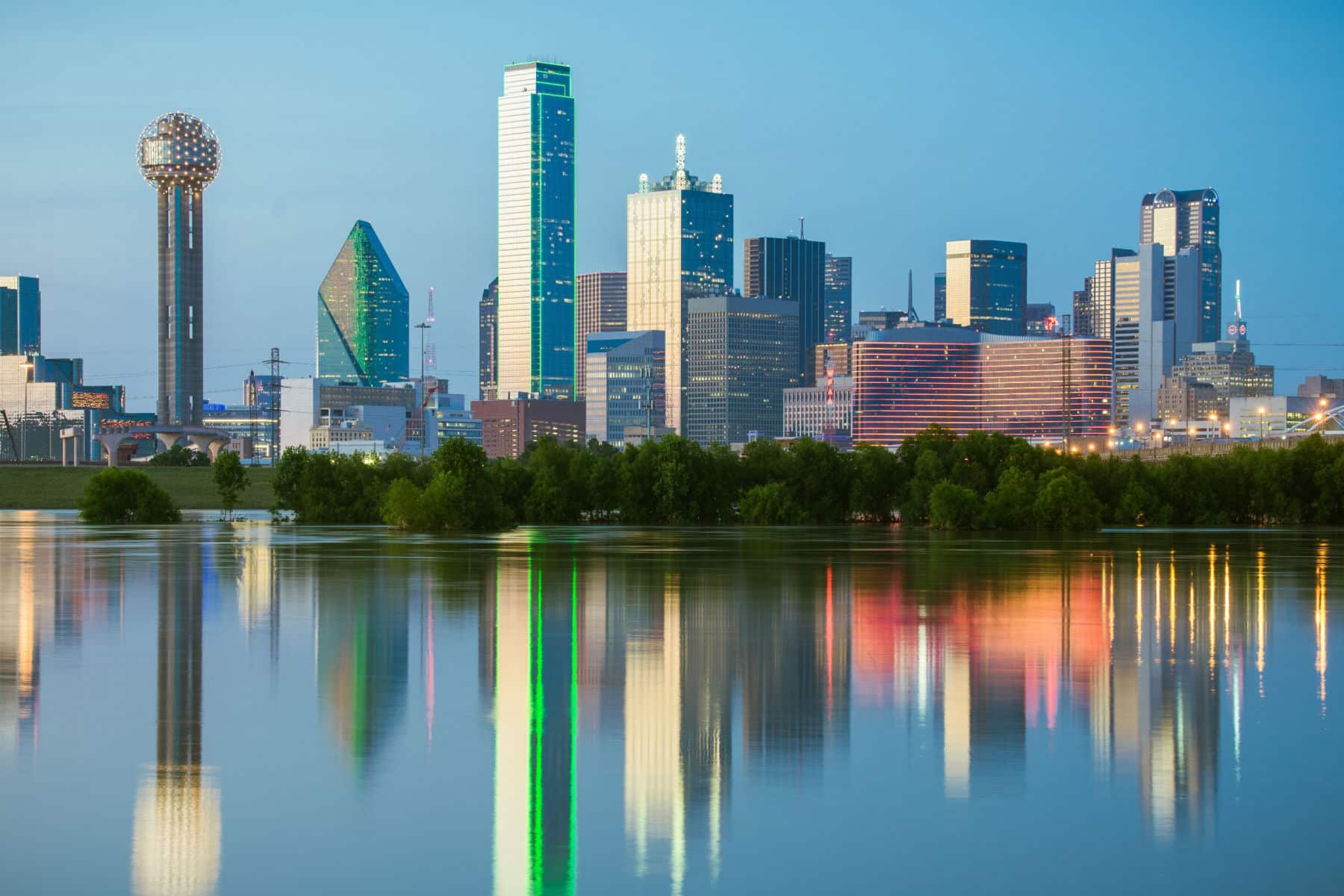
11. Reunion Tower
If you love a great view then our next Dallas landmark is for you. From 470 feet up you’ll experience breathtaking 360-degree panoramic views, a free digital photo and an indoor/outdoor observation deck that lets you see for miles in any direction.
At #11 on our list of the Best Dallas Landmarks is Reunion Tower.
Reunion Tower is an iconic observation tower located in downtown Dallas, Texas. It is a 561-foot-tall structure with a distinctive geodesic dome at the top, which houses an observation deck, restaurant, and event space.
The tower was completed in 1978 as part of a downtown redevelopment project known as the “Reunion” project, which aimed to revitalize the area around Union Station and the historic Reunion Arena. The tower was designed by architectural firm Welton Becket and Associates, and its unique shape and design quickly became a symbol of Dallas.

Check Out The GeO-Deck
The observation deck at the top of the tower, known as the GeO-Deck, offers 360-degree views of the Dallas skyline and surrounding areas. Visitors can access the observation deck via high-speed elevators, which take them to the top of the tower in just 68 seconds. The GeO-Deck also features interactive exhibits and displays that highlight the history and culture of Dallas.
The restaurant at the top of the tower, called Five Sixty by Wolfgang Puck, is a fine dining establishment that offers panoramic views of the city. The restaurant revolves 360 degrees every hour, giving diners a constantly changing view of the city as they enjoy their meals.
In addition to the observation deck and restaurant, Reunion Tower also offers event spaces for private parties, corporate events, and weddings. The tower’s ballroom and other event spaces offer stunning views of the city and are a popular destination for special events.
Reunion Tower is a popular tourist destination in Dallas and a beloved landmark of the city’s skyline. It has been featured in numerous films and television shows, including the opening credits of the television series “Dallas.”
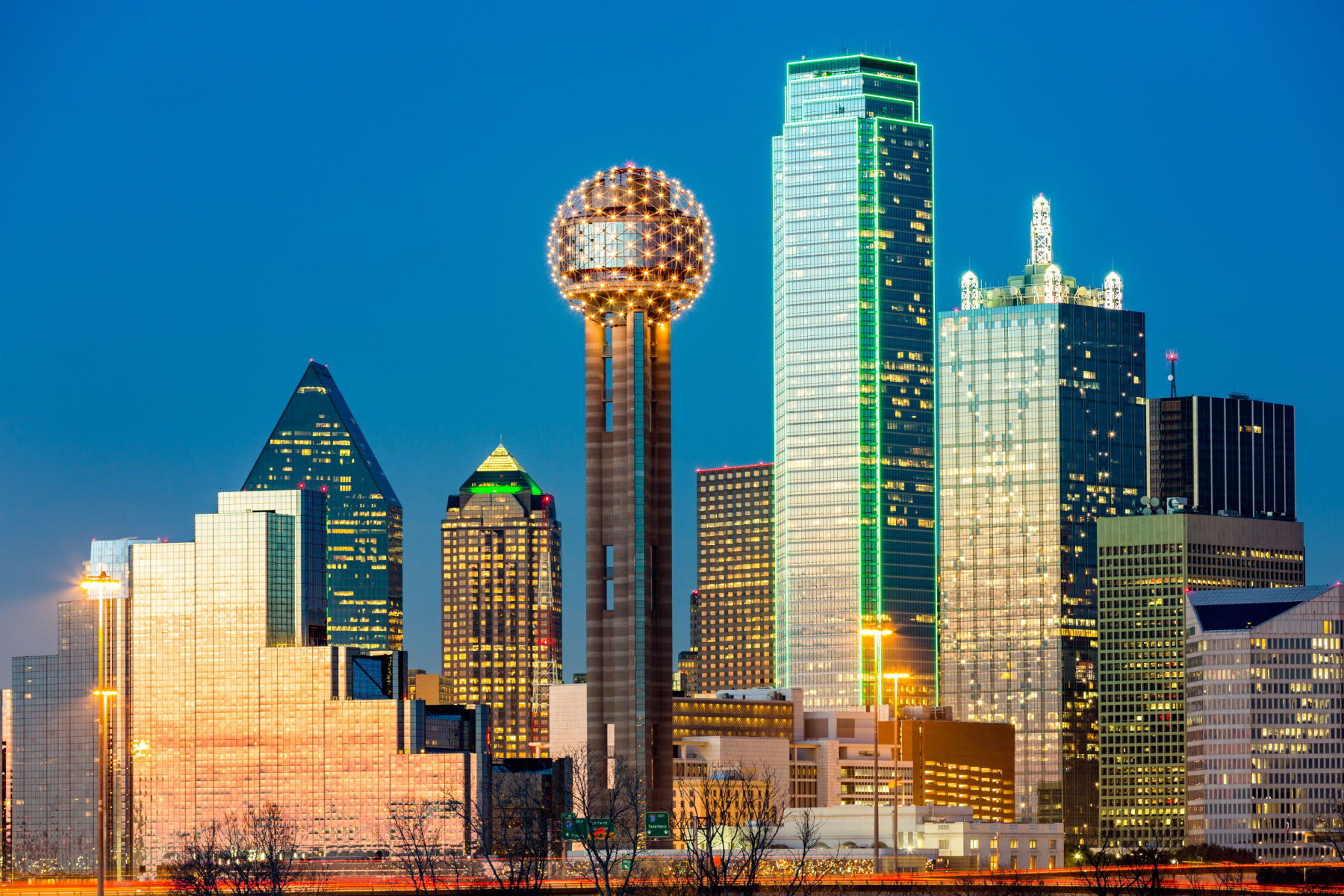
The Top 10 Dallas Landmarks
10. George W. Bush Presidential Library and Museum
We’re on to our Top 10 Dallas Landmarks and, at #10, we have the 13th presidential library to be administered by the National Archives. Welcome to the George W. Bush Presidential Library and Museum.
The George W. Bush Presidential Library and Museum islocated on the campus of Southern Methodist University in Dallas, Texas. It is dedicated to preserving and exhibiting artifacts and documents related to the presidency of George W. Bush, the 43rd President of the United States.
The library and museum were designed by Robert A.M. Stern Architects and were opened to the public in 2013. The complex covers 226,000 square feet and features permanent and temporary exhibits, a research center, a theater, and a replica of the Oval Office.
The permanent exhibits at the museum showcase the events and issues that defined the presidency of George W. Bush, including: the September 11th terrorist attacks, the wars in Iraq and Afghanistan, and the response to Hurricane Katrina.
The exhibits include interactive displays, multimedia presentations, and artifacts such as presidential speeches, photographs, and personal items.

Check Out The Decision Points Theater
One of the highlights of the museum is the interactive Decision Points Theater, which allows visitors to step into the shoes of the President and make decisions based on the information available at the time. Visitors can also explore a replica of the Oval Office and learn about the history and symbolism of the office.
The museum also features temporary exhibits on a variety of topics related to the presidency, including art exhibitions, presidential history, and current events.
The museum’s research center offers access to the archives and collections of the library, which include millions of documents, photographs, and audiovisual recordings related to the presidency of George W. Bush.
The George W. Bush Presidential Library and Museum is a popular destination for tourists and students of history and politics. It provides a unique perspective on the presidency of George W. Bush and the events and issues that shaped his time in office.
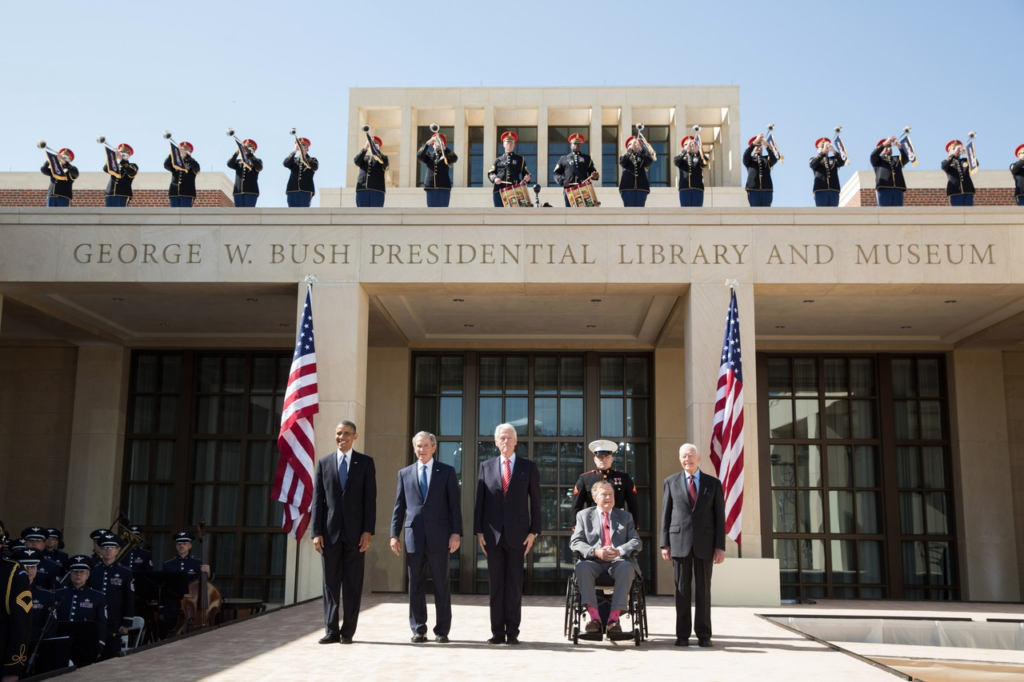
9. The Sixth Floor Museum at Dealey Plaza
We go from one Dallas landmark connected to a former President of the Unites States to another. At #9 on our list of the Best Dallas Landmarks is the Sixth Floor Museum at Dealey Plaza.
The Sixth Floor Museum at Dealey Plaza is a museum located in the former Texas School Book Depository building in downtown Dallas, Texas. The museum is dedicated to exploring the life, legacy, and assassination of President John F. Kennedy, who was shot and killed while traveling in a motorcade through Dealey Plaza on November 22, 1963.
The museum features permanent and temporary exhibits that offer a comprehensive look at the events leading up to and following the assassination, as well as the cultural and political climate of the era. The museum’s exhibits include photographs, artifacts, films, and interactive displays that help visitors understand the historical context and significance of the assassination.

See The Sniper’s Nest
One of the most popular exhibits at the museum is the recreated sniper’s nest on the sixth floor of the building, which provides visitors with a close-up view of the scene from which Lee Harvey Oswald is believed to have fired the shots that killed President Kennedy.
Visitors can also explore exhibits on the legacy of President Kennedy, including his impact on the civil rights movement, his foreign policy initiatives, and his personal life and family.
The museum offers audio tours in multiple languages, as well as guided tours and educational programs for students and groups. The museum also hosts special events and lectures related to the history and legacy of President Kennedy and the assassination.
The Sixth Floor Museum at Dealey Plaza is a popular destination for tourists and history enthusiasts, as well as a center for research and scholarship on the assassination of President Kennedy.
The museum’s location in the former Texas School Book Depository building, which has been preserved as a National Historic Landmark, adds to its historical significance and impact.
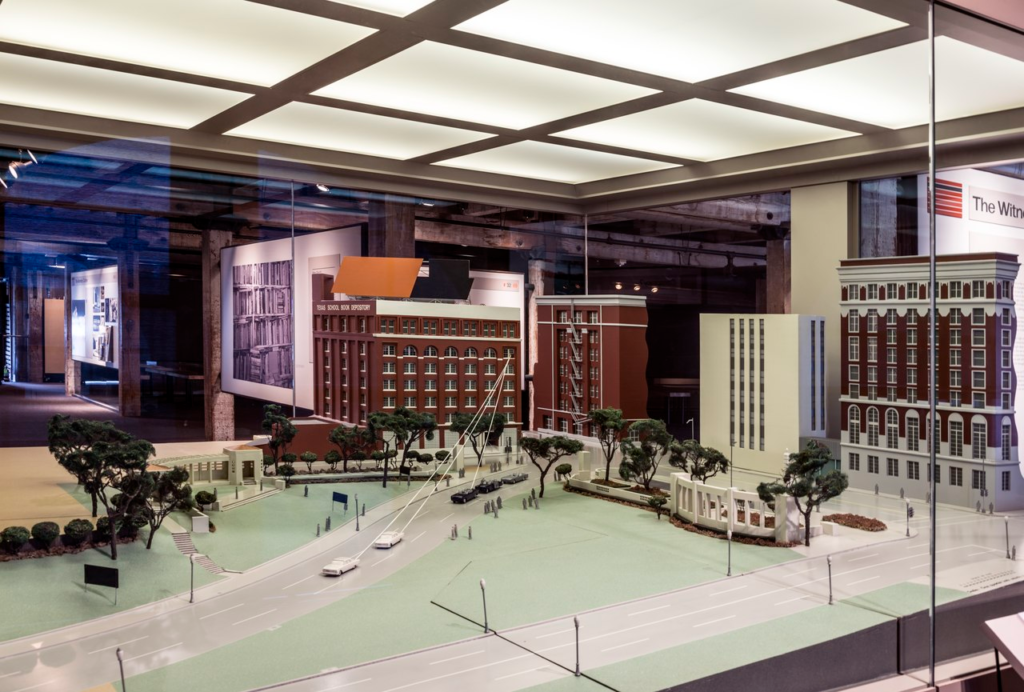
8. Perot Museum of Nature and Science
At our next Dallas landmark, you can race a T. rex, challenge friends in robot competitions, explore the astonishing links between dinosaurs and modern-day birds, experience a simulated earthquake, journey through the universe, and test what it means to “be human”.
At #8 on our list of the Best Dallas Landmarks is the Perot Museum of Nature and Science.
The Perot Museum of Nature and Science is named after Ross Perot, a Texas businessman and philanthropist who donated $50 million towards its construction. The museum opened in 2012 and has since become a popular destination for locals and visitors alike.

Perot Museum of Nature and Science | Courtesy of Wikimedia Commons
Five Floors Of Interactive Exhibits
The Perot Museum features five floors of interactive exhibits that explore a variety of scientific topics, including geology, paleontology, biology, astronomy, and engineering. Some of the highlights of the museum include:
- The T. Boone Pickens Life Then and Now Hall, which features a collection of fossils, interactive exhibits, and life-size models of prehistoric creatures, including a Tyrannosaurus rex.
- The Rose Hall of Birds, which showcases hundreds of bird specimens from around the world and includes interactive exhibits about bird behavior and conservation.
- The Moody Family Children’s Museum, which is designed for children ages 5 and under and features a variety of hands-on exhibits that encourage exploration and play.
- The Being Human Hall, which explores the biology and behavior of humans and includes interactive exhibits about the brain, the senses, and human evolution.
- The Lyda Hill Gems and Minerals Hall, which features a stunning collection of gems, minerals, and meteorites from around the world.
The museum also has a 3D theater, a planetarium, and a variety of temporary exhibits that rotate throughout the year. Overall, the Perot Museum of Nature and Science offers a fun and engaging learning experience for visitors of all ages.

7. AT&T Stadium
Our next Dallas landmark is one which is quite popular with sports enthusiasts. At #7 on our list of the Best Dallas Landmarks is AT&T Stadium – home of the Dallas Cowboys.
AT&T Stadium, also known as “Jerry World” after Dallas Cowboys owner Jerry Jones, is a massive sports and entertainment venue located in Arlington, Texas.

AT&T Stadium | Courtesy of Wikimedia Commons
A Brief History Of The Stadium
- Planning and Construction: The idea for a new home for the Dallas Cowboys football team began in the late 1990s, and plans for the stadium were announced in 2004. Construction began in 2006 and took nearly four years to complete.
- Design: The stadium was designed by architecture firm HKS, and its unique retractable roof was inspired by the shape of a saddle and the opening and closing mechanism of a camera aperture. The stadium also features a massive video screen suspended over the field, which is one of the largest in the world.
- Opening: AT&T Stadium officially opened on May 27, 2009, with a concert by country music star George Strait. The first football game played at the stadium was a pre-season matchup between the Dallas Cowboys and the Tennessee Titans on August 21, 2009.
- Events: Since its opening, AT&T Stadium has hosted a wide range of events beyond football games, including concerts, college football games, and boxing matches. One of the most notable events was Super Bowl XLV in 2011, which set a record for the largest attendance at a Super Bowl game.
- Technology: AT&T Stadium is known for its cutting-edge technology, including a state-of-the-art sound system and a high-speed Wi-Fi network that can support up to 100,000 simultaneous connections. The stadium also has a mobile app that allows fans to order food and drinks, purchase tickets, and watch replays from their seats.
- Legacy: AT&T Stadium has become one of the most iconic sports venues in the world, and its influence can be seen in the design of other new stadiums, such as the Mercedes-Benz Stadium in Atlanta and the Allegiant Stadium in Las Vegas. It has also played a significant role in the revitalization of the surrounding area, which has seen a surge in development and tourism since the stadium’s opening.

Cowboys Stadium | Courtesy of Wikimedia Commons
6. Founders’ Plaza
Our next Dallas landmark is a real gem which celebrates the city’s history and its founders. At #6 on our list of the Best Dallas Landmarks is Founders’ Plaza.
Here is a brief description of the plaza:
- Location: Founders’ Plaza is located in the heart of downtown Dallas, near the intersection of Elm Street and Griffin Street. It covers an area of about 1.7 acres and is adjacent to the Dallas Convention Center.
- Features: The plaza features a variety of amenities, including a large open lawn, benches and tables for picnicking, a small playground for children, and a fountain. One of the most notable features of the plaza is a series of large bronze statues that depict the three founders of Dallas: John Neely Bryan, who is credited with founding the city in 1841, and his friends William Keller and William H. Simpson.
- History: Founders’ Plaza was dedicated in 1976 as part of the United States Bicentennial celebrations. The plaza was designed by landscape architect Lawrence Halprin, who also designed the FDR Memorial in Washington D.C. and the Love Park in Philadelphia.
- Events: Founders’ Plaza is a popular destination for public events, such as concerts, festivals, and community gatherings. The plaza also serves as a starting point for walking tours of downtown Dallas, and it provides easy access to the city’s many attractions, including the Dallas Museum of Art, the Perot Museum of Nature and Science, and the Dallas World Aquarium.
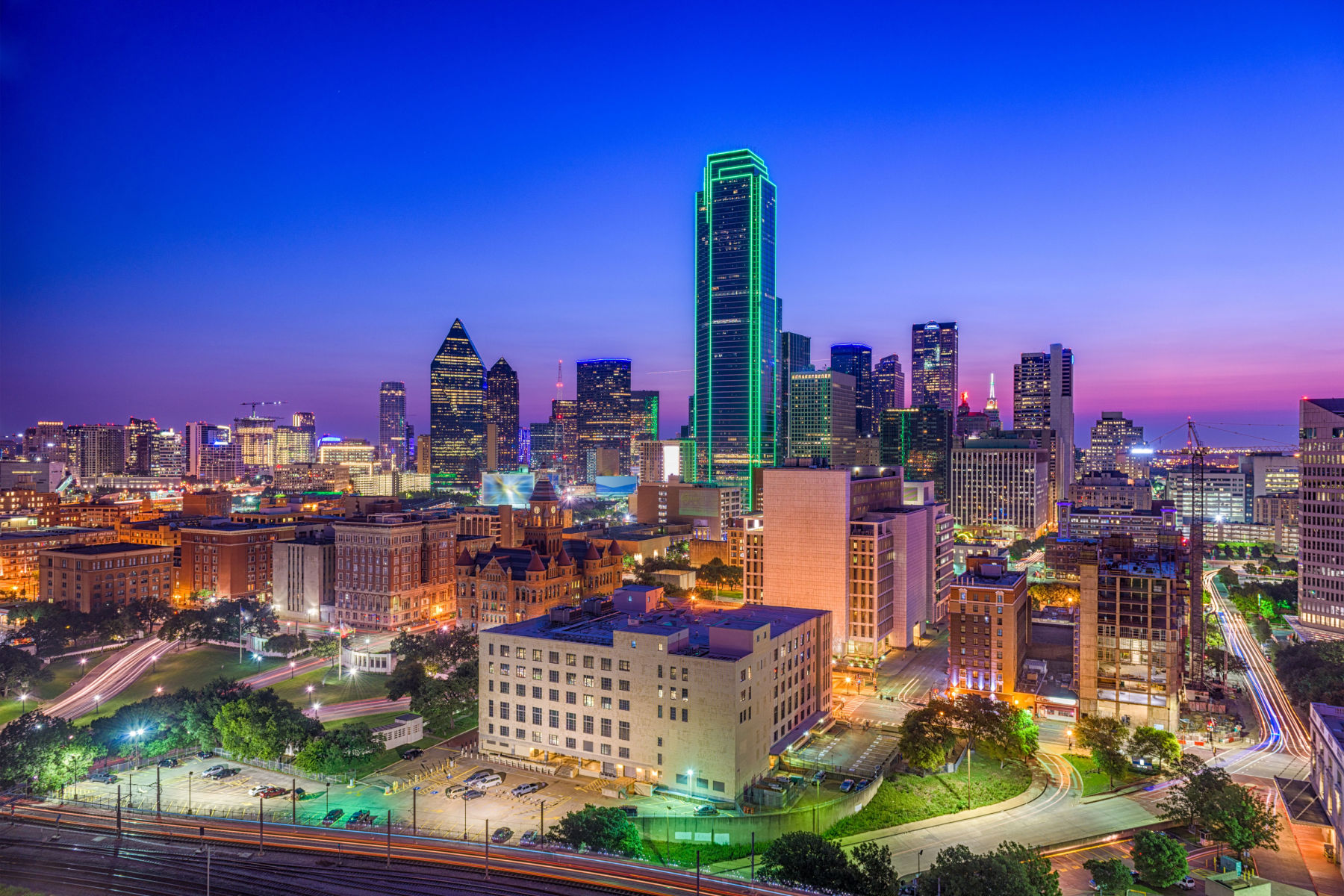
Top 5 Dallas Landmarks
5. Dallas Heritage Village
We’re on to the Top 5 Dallas Landmarks. Our next landmark is a living history museum. It’s home to the largest and finest collection of 19th century pioneer and Victorian homes and commercial buildings in Texas. Welcome to Dallas Heritage Village.
The Dallas Heritage Village is a living history museum located in the Cedars neighborhood of Dallas. The museum is dedicated to preserving and interpreting the history of Dallas and North Texas from the 1840s to the early 1900s.
The museum consists of over 20 historic buildings that have been moved to the site from different parts of North Texas. These buildings include homes, schools, churches, and businesses, and are arranged to resemble a typical North Texas village from the late 19th century.
Visitors to the Dallas Heritage Village can explore the interiors of the historic buildings and see exhibits and demonstrations of period crafts and activities. The museum also offers guided tours, educational programs, and special events throughout the year.
Some of the notable buildings at the Dallas Heritage Village include the Blum House, a restored Victorian home; the Millermore Mansion, a grand home built in the 1860s; and the Sullivan Log House, the oldest building in Dallas County, which dates back to the 1840s.
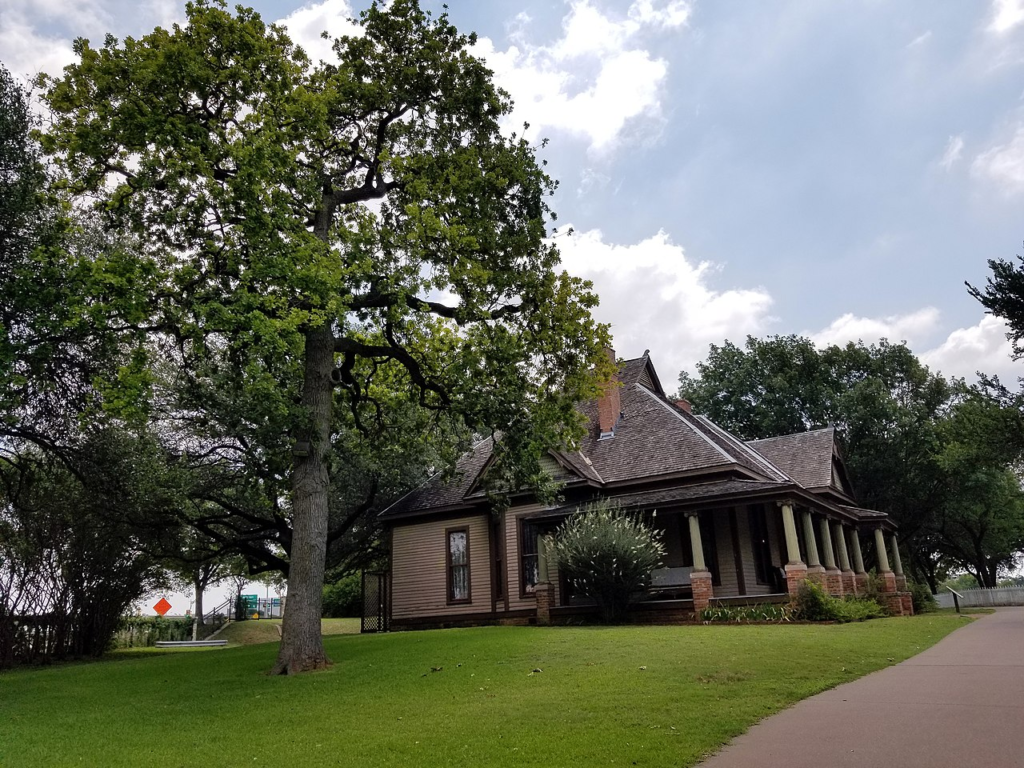
4. John F. Kennedy Memorial Plaza and The Grassy Knoll
The history of Dallas is inextricably linked to the tragic events of November 22nd, 1963. Our next Dallas Landmark is a tribute to what happened on the fateful day. At #4 on our list of the Best Dallas Landmarks is the John F. Kennedy Memorial Plaza and The Grassy Knoll.
The John F. Kennedy Memorial Plaza and The Grassy Knoll are both significant landmarks associated with the assassination of President John F. Kennedy on November 22, 1963.
The John F. Kennedy Memorial Plaza is a simple, open-air monument designed by architect Philip Johnson. The monument consists of a square, roofless room with four pillars at each corner and a large, white, concrete slab in the center engraved with Kennedy’s name and the dates of his birth and death.

Kennedys arrive at Dallas 11-22-63 | Courtesy of Wikimedia Commons
A Memorial Meant To Symbolize Kennedy’s Spirit & Vision
The monument is meant to symbolize Kennedy’s spirit and vision, and visitors often leave flowers, notes, and other mementos in remembrance of the late president.
The Grassy Knoll is a small hill located adjacent to the John F. Kennedy Memorial Plaza, and it gained notoriety as a possible location from where the fatal shots were fired that killed President Kennedy.
Many conspiracy theories have suggested that a second gunman fired from the Grassy Knoll, although this has been the subject of much debate and remains unproven.
Today, both the John F. Kennedy Memorial Plaza and The Grassy Knoll are popular tourist destinations and serve as a somber reminder of the tragic events that took place in Dealey Plaza over half a century ago.
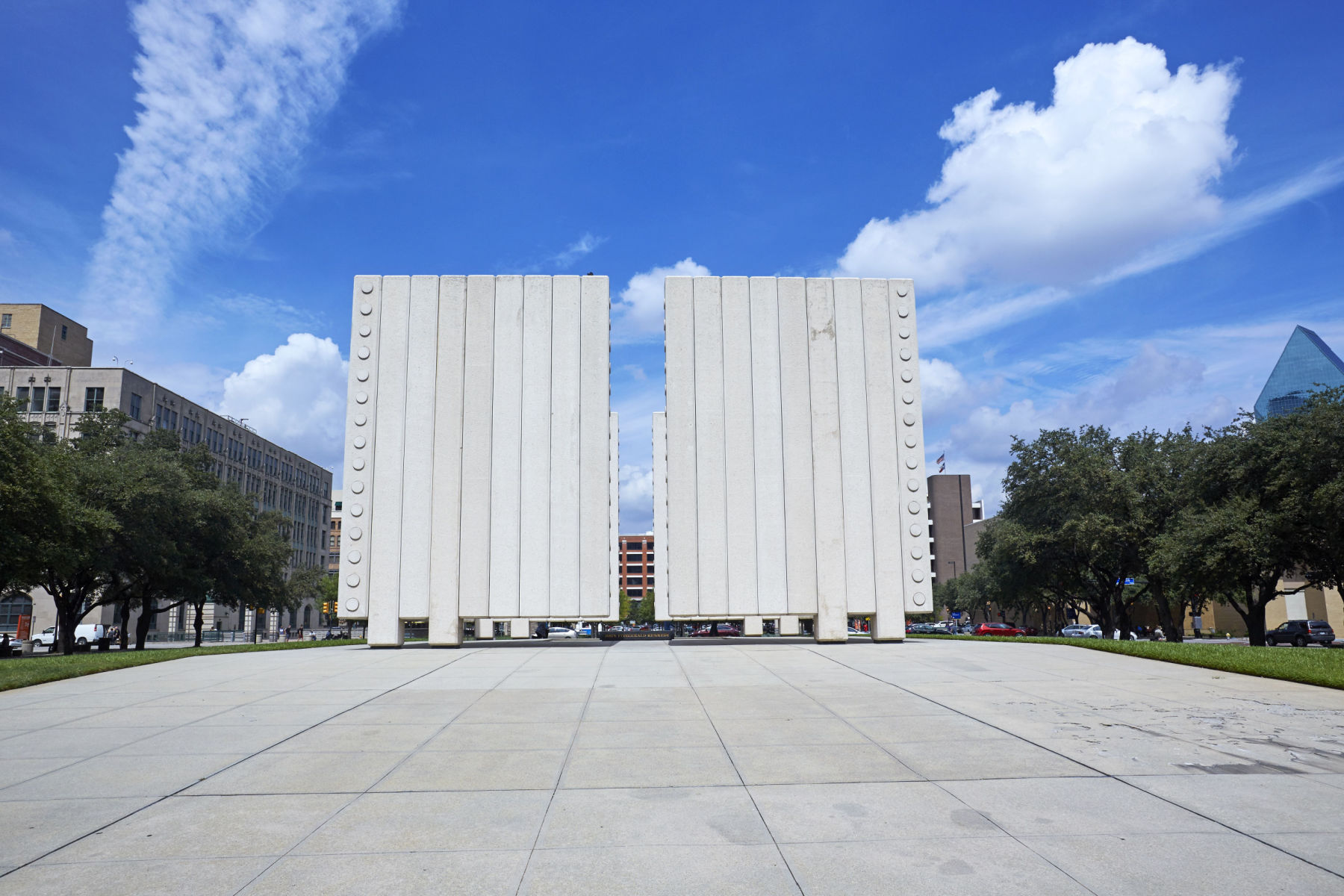
3. Dallas Arboretum and Botanical Garden
Our next Dallas landmark cultivates a culture of diversity, equity, inclusion and accessibility by providing a safe and beautiful space that welcomes all to enjoy. At #3 on our list of the Best Dallas Landmarks is the Dallas Arboretum and Botanical Garden.
The Dallas Arboretum and Botanical Garden is a 66-acre botanical garden that features a variety of themed gardens, lush lawns, and a vast collection of plants, flowers, and trees from around the world.
One of the main features of the Dallas Arboretum is the Rory Meyers Children’s Adventure Garden, a 8-acre interactive outdoor science museum designed to encourage children to explore and learn about science, nature, and conservation. The garden features over 150 interactive exhibits, such as a giant kaleidoscope, a treetop canopy walk, and a miniature pioneer village.
Other notable areas within the Dallas Arboretum include the Woman’s Garden, a collection of gardens designed by female landscape architects; the Paseo de Flores, a colorful promenade lined with seasonal flowers; and the Boswell Family Garden, a secluded oasis featuring a koi pond, fountains, and a bamboo forest.
Throughout the year, the Dallas Arboretum hosts a variety of events and activities, including seasonal festivals, concerts, and educational programs for all ages. Visitors can also enjoy dining options and shopping at the garden’s gift shop, which offers a selection of gardening tools, books, and souvenirs.
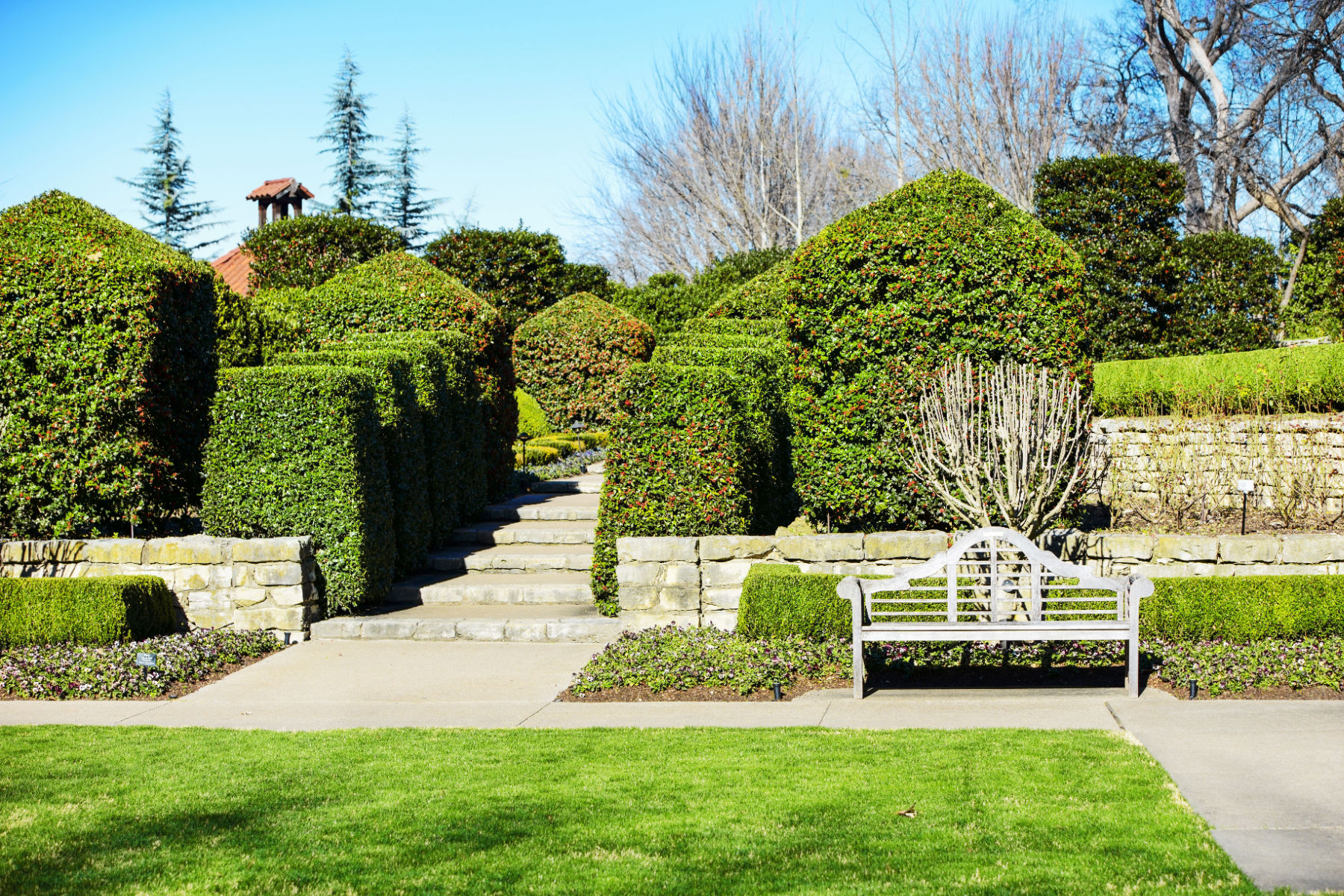
2. Southfork Ranch
We’re on to our final 2 Dallas landmarks. In the runner-up spot at #2 is an iconic ranch which has been inextricably linked to the city of Dallas due to the enduring popularity of a 1980s television program. At #2 on our list of the Best Dallas Landmarks is Southfork Ranch.
Southfork Ranch is a famous tourist destination located in Parker, Texas, just north of Dallas. The ranch gained worldwide recognition as the setting for the popular television series “Dallas,” which aired from 1978 to 1991.
The ranch itself has a long and storied history dating back to the early 1900s. Originally known as the “Duncan Acres,” the ranch was purchased in 1950 by oil tycoon, Joe Duncan, and his wife, Sophie. They renamed it “Southfork Ranch” and began to develop the property as a cattle ranch and equestrian center.

Southfork Ranch | Courtesy of Wikimedia Commons
The Ranch Was Purchased By A Hollywood Actor
In the early 1970s, Southfork Ranch was purchased by the actor, Joel McCrea, who had a passion for horses and ranching. He expanded the property, adding new facilities and amenities, and began to host charitable events and horse shows.
In 1978, Southfork Ranch gained worldwide fame when it was chosen as the filming location for the television series “Dallas.” The ranch was used as the home of the fictional Ewing family, and many iconic scenes from the show were filmed on the property. The popularity of the show led to a surge in tourism, and Southfork Ranch became a popular destination for fans of the show.
In 1985, the ranch was purchased by the current owners, the Muns family, who have continued to operate it as a tourist destination. Today, visitors can tour the ranch, see memorabilia from the “Dallas” series, and enjoy a variety of activities and events, such as horseback riding, cattle drives, and trail rides.
Overall, Southfork Ranch has a rich history as a working cattle ranch, an equestrian center, and a filming location for one of the most popular television shows of all time. Today, it continues to be a beloved tourist destination and an important part of Dallas’s cultural heritage.
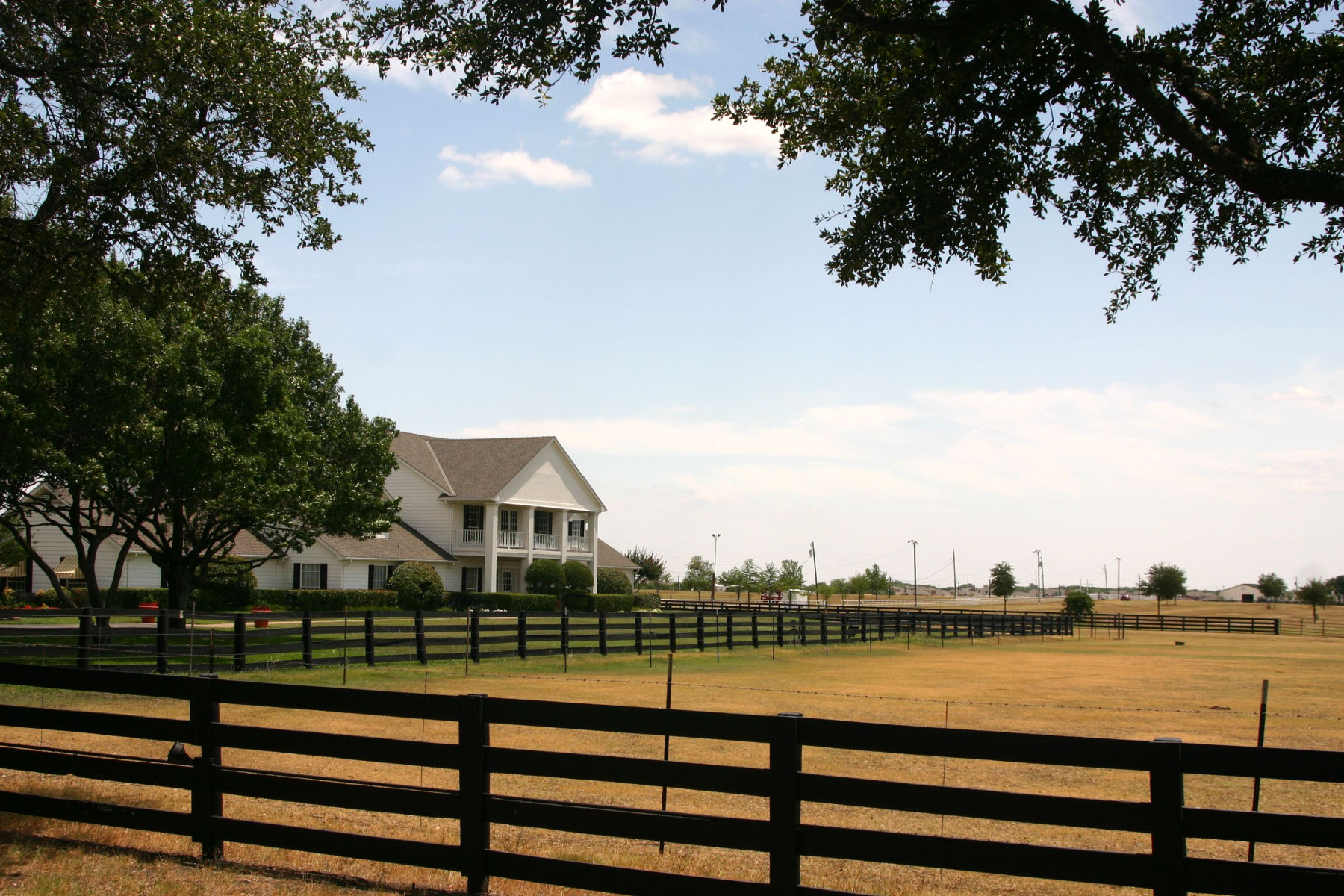
1. Pioneer Plaza
As the #11 Dallas Landmark, More Than Just Parks has chosen Pioneer Plaza. The Plaza commemorates Dallas’ beginnings by celebrating the trails that brought settlers to Dallas.
The site features native plants and trees and a flowing stream in a natural setting and a re-creation of a cattle drive in bronze with longhorn steers being driven by three cowboys on horses.
Pioneer Plaza is a 4.2-acre public park located in downtown Dallas, Texas. It features a large sculpture installation depicting a cattle drive in the late 19th century. The installation, created by artist Robert Summers, features 49 bronze sculptures of cowboys and longhorn cattle in motion across a re-created landscape of a Texas plain.
The sculptures were created as part of a public-private partnership between the City of Dallas and private donors in the late 1980s to honor the city’s pioneer history and heritage as a center of the cattle industry. The installation is the largest public art installation of its kind in the world and has become a popular tourist destination and gathering place for locals and visitors alike.
In addition to the sculpture installation, Pioneer Plaza features a granite waterway that represents the nearby Shawnee Trail, which was a major cattle drive route during the 19th century. The waterway includes cascading waterfalls and pools that provide a tranquil atmosphere in the heart of the city.
Pioneer Plaza also serves as a venue for events and festivals throughout the year, such as the annual Dallas Blues Festival and the African American Museum’s Juneteenth Celebration.
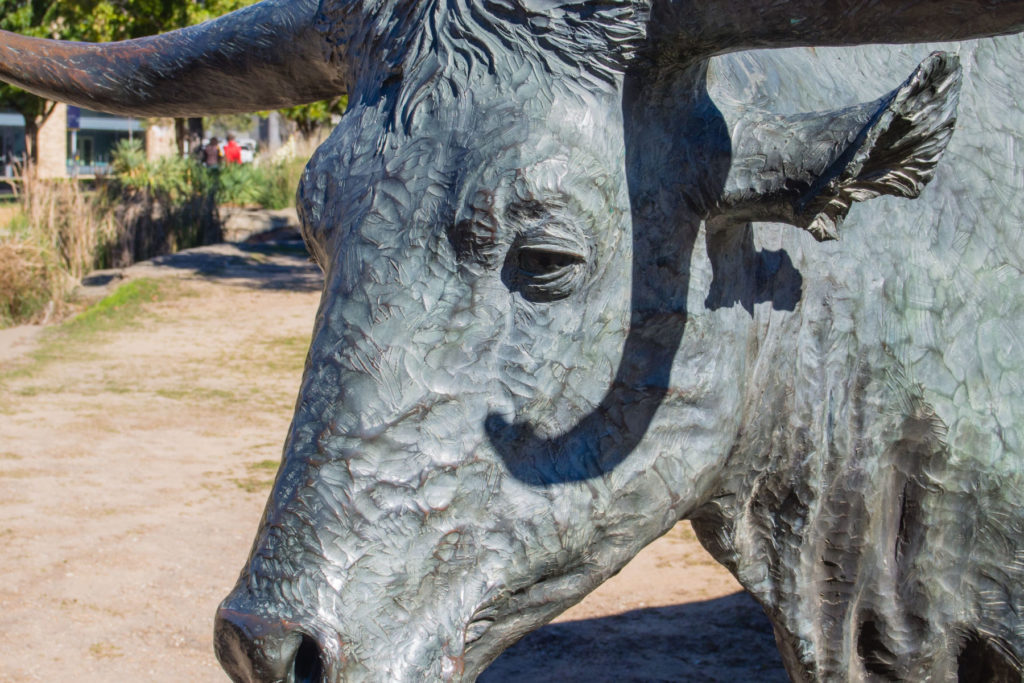
Map Of Dallas Landmarks
List Of Dallas Landmarks
- Pioneer Plaza
- Southfork Ranch
- Dallas Arboretum and Botanical Garden
- John F. Kennedy Memorial Plaza and The Grassy Knoll
- Dallas Heritage Village
- Founder’s Plaza
- AT&T Stadium
- Perot Museum of Nature and Science
- The Sixth Floor Museum at Dealey Plaza
- George W. Bush Presidential Library and Museum
- Reunion Tower
- Cedar Ridge Preserve
- Margaret Hunt Hill Bridge
- Deep Ellum
- Fair Park
Why Trust Us About Dallas Landmarks?
We’re Jim Pattiz and Will Pattiz, collectively known as the Pattiz Brothers (and sometimes as the “Parks Brothers”).
You should probably know that we don’t just make this stuff up out of thin air. We absolutely LOVE America’s public lands and have spent our entire adult lives bringing these places to life through our amazing short films.
We’ve worked with the National Park Service, the Department of Interior, USDA, U.S. Forest Service, and more for years creating films on important places and issues. Our work has been featured in leading publications all over the world and even some people outside of our immediate family call us experts on the national parks.
And, in 2018, our father – having spent a lifetime teaching history – joined us so that he could help us to tell the incredible stories behind these amazing places.
Meet The Parks Brothers
We Hope You’ll Join Our Journey

Our goal here at More Than Just Parks is to share the beauty of America’s national parks and public lands through stunning short films in an effort to get Americans and the world to see the true value in land conservation.
We hope you’ll follow our journey through the parks and help us to keep them the incredible places that they are. If you’re interested in joining the adventure then sign up below!

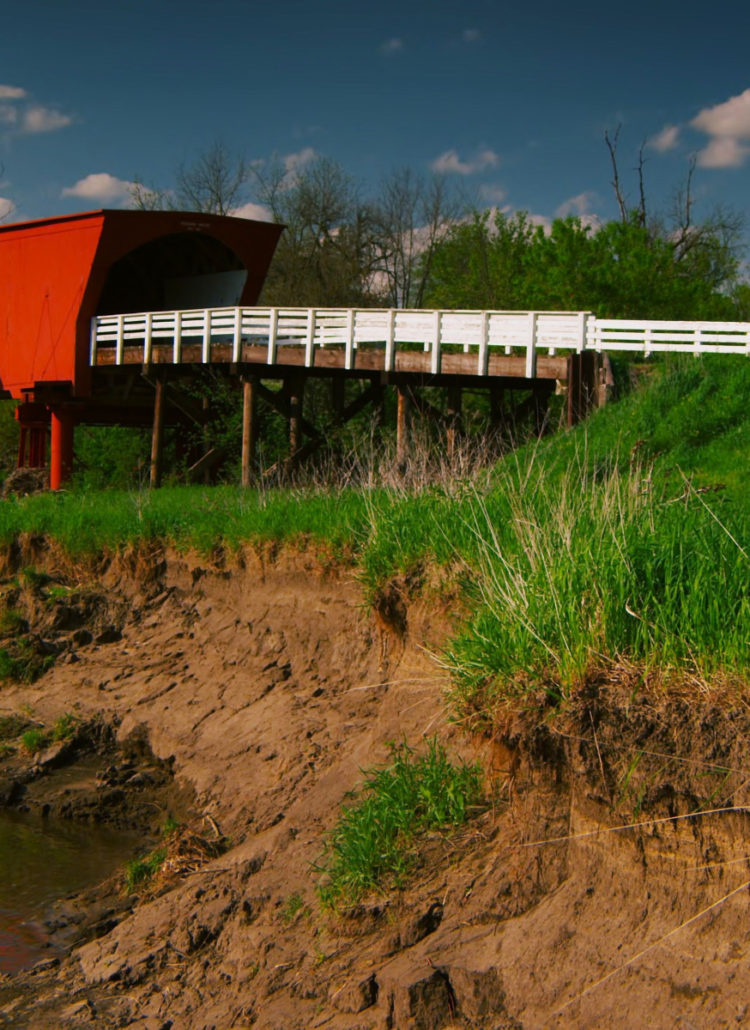
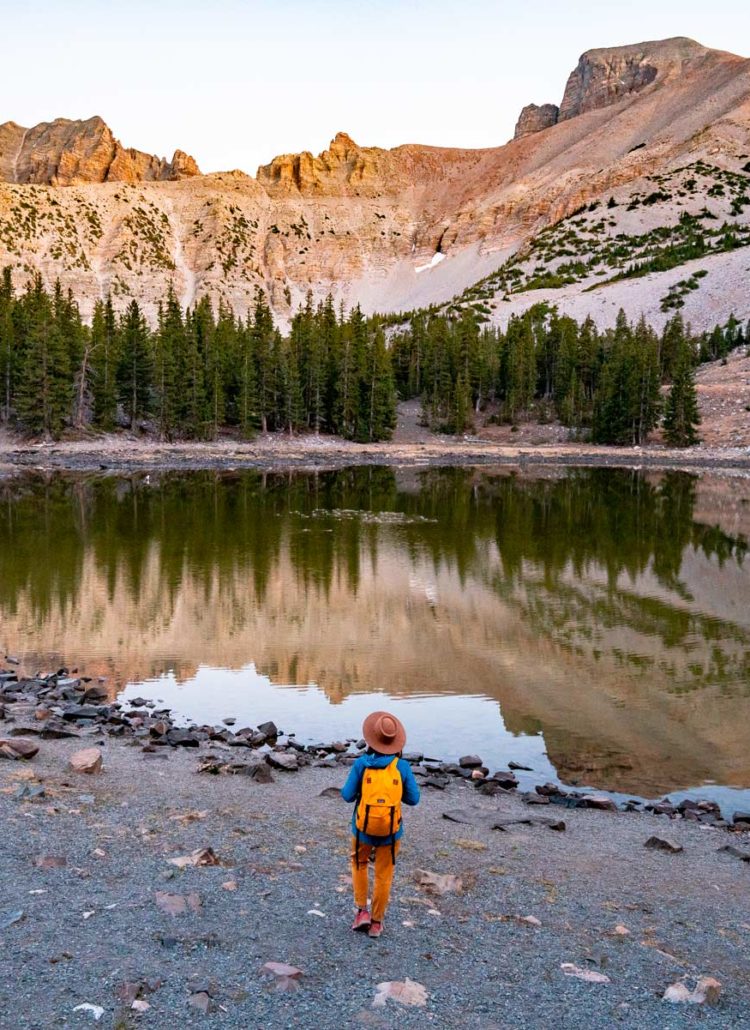
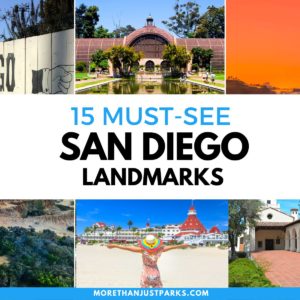

Leave a Reply